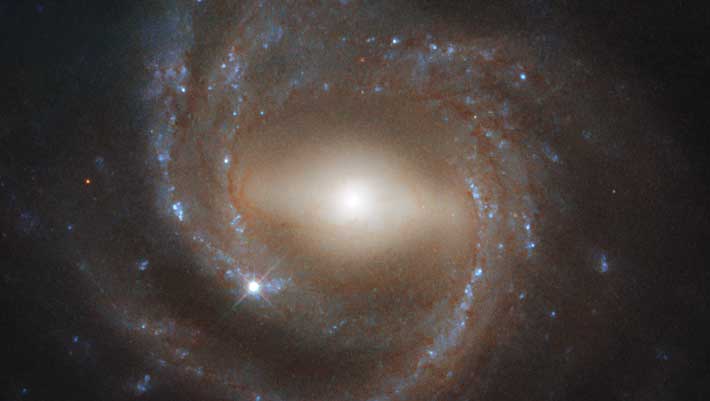Hubble Space Telescope Spotted An Impressive Spiral Galaxy Similar To Milky Way

Hubble Space Telescope captured an impressive spiral galaxy, which is set in the constellation of Pegasus. The galaxy is dubbed NGC 7773, and it is at approximately 375 million light-years distance from our planet.
The galaxy depicted in the image is quite similar to our galaxy, Milky Way, as both are a kind of galaxy known as ‘barrel spiral galaxy.’ That is because a ‘bar’ of light found horizontally across the core of the galaxy can be seen. That ‘bar’ is a place of dust and gas in which new stars are forming.
Studying a spiral galaxy like Milky Way would shed more light on our own galaxy formation
Researchers think that the bars evolve later in the life cycle of galaxies when the dust, gas and other elements that can be found between stars is slowly pulled toward the core of the galaxy because of gravitational forces.
About one-third to two-thirds of all galaxies known hold bars, but it has been seen that younger galaxies are less probably to have it. This implies that bars evolve with time and that their existence points to an older galaxy.
A spiral galaxy such as NGC 7773 is excellent for astronomers to observe because of their resemblances with the Milky Way. If we can understand how these galaxies evolved and grew, we can draw lines between the findings and our understanding of the Earth’s galaxy.
The impressive spiral galaxy was snapped with Hubble Space Telescope’s WFCS3 camera
The image of this impressive spiral galaxy was taken with a tool named the Wide Field Camera 3 (WFCS3) on the Hubble Space Telescope. This vital instrument was incorporated on Hubble back in 2009 and the source behind lots of the impressive Hubble images spread across the internet.
At the beginning of this year, on January the 8th, the camera suddenly stopped. The camera performed the shutdown process by default because data incorrectly indicated an issue with its voltage levels. Other telemetry circuits also reported erroneous voltage levels, which implied that the problem was with the measuring of the voltage levels, and not with the voltage.
NASA technicians could bring the tool back online on January the 17th. The instrument has been functioning just fine since then. Since the WFCS3 has been introduced to Hubble telescope, it has collected more than 240,000 observations, making it the most utilized tool on the telescope at the moment.
0 comments